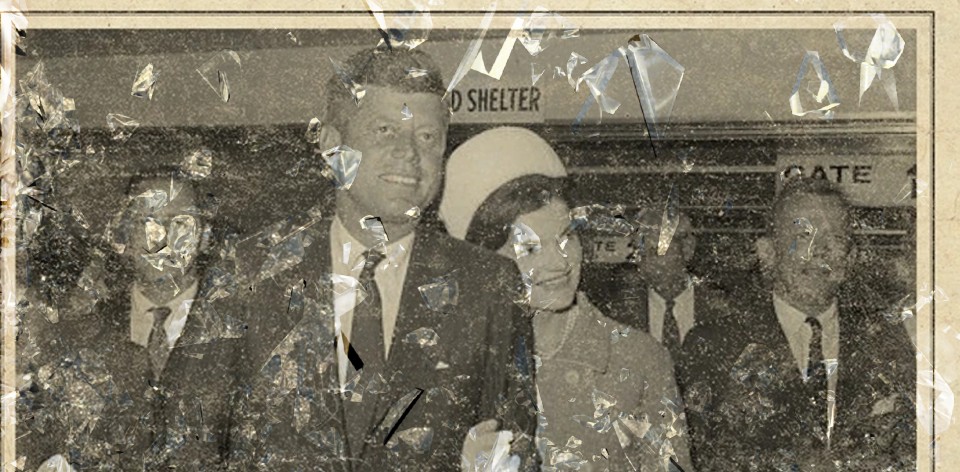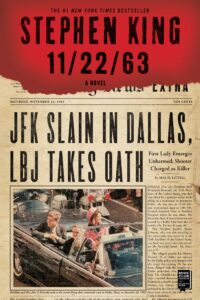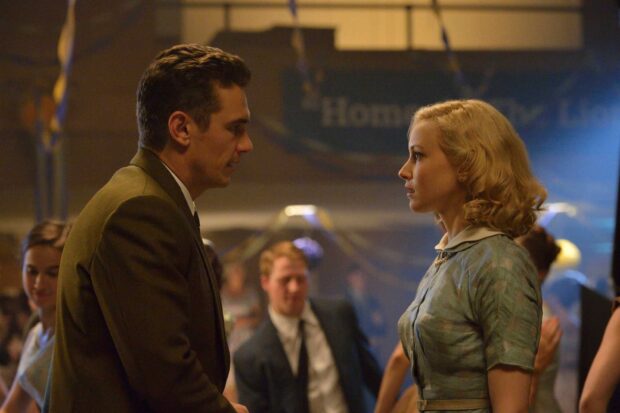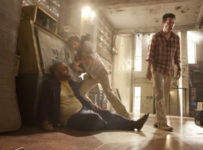Welcome back to Inconstant Reader, the inconstant feature column that explores Stephen King’s books in the order they were published — sort of! Warning: the past is obdurate and will throw out some major SPOILERS.
What would you do if you could travel through time? Would you want to skip to the end and see how it all turns out? Or do the old chestnut of going back in time to kill Baby Hitler?
Stephen King plays with the latter concept in 11/22/63, pondering whether or not foreknowledge of the future makes it any easier to kill a person. King, alternate histories, and time travel. This book hits so many of my wheelhouses that it practically steers its own ship.
First published in 2011, 11/22/63 is King’s 60th book (if you count all the anthologies and Richard Bachman books as well). Like his previous release Under the Dome, the origins of this novel goes back to the 1970s — as a 14 page draft called Split Track — but was put aside when the writer realised just how much research it would involve.
The title, of course, refers to the day that JFK was shot in Dallas. As such, one might expect that an alternate history tale brushes against some conspiracy theories or similar. (By coincidence, I read this back to back with The Illuminatus Trilogy, so I certainly had my chance to get a fill of them). Instead, King concentrates on writing a thoroughly researched period piece, with a thriller element that drives the back half. After all, save for two special effect scenes, Back to the Future is entirely a period comedy.
Like King’s It, a book heavily referenced in this one, King’s 11/22/63 takes place in two different time periods. Yet it’s fair to say that he’s not attempted anything quite like this thriller before. This story begins in the present day, where recently divorced high school teacher Jake Epping is summoned by diner owner and friend Al Templeton. Jake is surprised to see that Al, who was healthy the night before, is dying of late stage cancer. This is because Al has discovered a place in the back of his diner that takes him back to 1958, a thin spot in time and space if you will.
Al had a plan to stop the Kennedy assassination, although his sickness means that can no longer survive the five years between 1958 and 1963. So, Jake agrees to go back instead, living his life as George Amberson. In his first test run, George attempts to save a young family from an abusive and violent father. Here he learns his first lesson about the obdurate past: it does not want to be changed, and will do everything it can to stop you.
After this first attempt, Jake returns to 1958. In King’s particular mechanics of time travel, this resets everything in his previous try. So, Jake restarts his new/old life, first in the town of Derry, Maine and eventually making his way to Texas. There Jake/George exists in two worlds, one where he is a teacher who falls in love with fellow school employee Sadie Dunhill, and another who spies on Lee Harvey Oswald and makes murderous plans.
Indeed, there’s almost a point that you forget Jake/George is plotting to kill a man. King creates such a rich world in the 1950s, that you just enjoy spending time there. Speaking with The Wall Street Journal at the time of release, King commented: “Instead of people who read horror stories, people who read The Help or People of the Book might like this book, if they can get the message.”
King knows the power of this comfort, and much of the book is spent creating a holistic view of a life lived. So, as the clock ticks closer to the titular date, our allegiances become split. Part of us wants us to see Jake/George remain happy in the past. If we’re being honest, there’s another part of us that wants to see Oswald stopped before he has a chance to shoot Kennedy. Indeed, King writes about Oswald’s domestic life with a level of intimacy that brings us closer to his wife Marina, and the physical and verbal abuse of her adds to Jake/George’s motivation.
Suffice it to say, the climactic moments eventuate in a heartbreaking denouement, one that brings the warring threads together. After the exciting action climax, one in which George/Jake stops the assassination but loses Sadie in the process, he returns to the present to find that he has changed history for the worse. He makes the sacrificial decision to go back and reset history, even though he knows it means he and Sadie will never meet and fall in love. The groundwork King has laid had me weeping into my Kindle during the wee hours of the morning. (I later found out there was an alternate ending, although it would not have had the same impact).
For Constant Readers, there’s also plenty of intertextual references. Apart from the appearance of ‘19s’ in various places, and a specific nod to 19 June 1999 (the day King had his near-fatal accident), Jake witnesses a Takuro Spirit at one point, the Japanese car that lets us know this is not the Keystone Earth. More prominently, during his time in Derry – the setting for It, Insomnia, Dreamcatcher and more – Jake can’t quite place his finger on the darkness that runs through the town. He also meets several kids who seem a little more resilient to the horrors than the rest of the town. Beep-beep, Richie.
After mastering so many genres over the years, it’s unsurprising that King delivers a near perfect time travel joint. Asked by Wired in 2011 if he’s ever likely to attempt time travel stories again, he seemed certain he would not. “No, this is it. Absolutely not. No, that’s done. “It’s like Apollo Creed says, “Ain’t gonna be no rematch.” If there’s any time travelling Constant Readers out there, please let us know if he ever changed his mind.
When Constant Reader returns, we take a turn through the hard boiled streets and carnival tunnels of Dark City when it takes a ride into Joyland.






